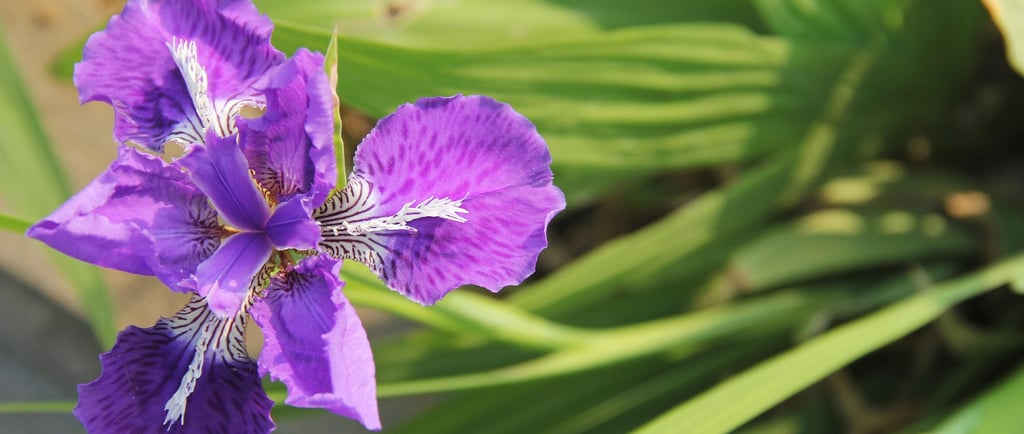🌈 The Rainbow Path of the Iris
🌸 A follow-up story that branches from Chapter The Flower in the Biology Album. 🐝✨ It invites children to explore the iris as a flower with purpose — one that uses color, texture, and even invisible light to guide pollinators. 🌈🔍 With this story, we introduce the idea of secret communication between flowers and pollinators — an invisible color we cannot see. It opens the door to inquiry: How do other pollinators see the world? Do bees, butterflies, and hummingbirds all see the same patterns? 🌟 It invites children to observe and research the ultraviolet decorations hidden in plants all around us.🌼
BIOLOGY STORIES
5/17/20252 min read


Look at this flower,its petals open like butterfly wings 🦋 — wide, elegant, and just a little bit mysterious. The colors seem to shift with the light: violet 💜, blue 💙, golden yellow 💛, even snowy white 🤍. It might look delicate, but it stands tall and proud like a dancer on stage 💃. That flower is named iris 🌸 — and it doesn’t just bloom for beauty. It blooms with purpose.
Long ago, people believed the rainbow 🌈 was a road between the heavens and the earth 🌍. The ancient Greeks told stories of a goddess named Iris 🧚♀️, who flew down that rainbow road to deliver messages from the gods to humans.That’s where this flower gets its name — Iris — say it and clap it: 👏 I-ris 👏 — from the Greek word for rainbow. It’s the perfect name, because irises bloom in almost every color , and some of their shades, like blue-violet, seem to shimmer ✨ like light itself.
The iris has a secret 🕵️ — its petals are designed to show pollinators the way in. Look closely at the lower petals — do you see the lines or dots, like tiny maps or arrows? ➡️ These are called nectar guides. They help bees and butterflies find their way to the treasure: the sweet nectar hidden deep inside 🍯.Remember the meaning of nectar? The drink of the gods. 🧉👑Nectar is the flower’s gift to its visitors, and the guides are like signs saying, “This way to the reward!” 🎯
And if you look even closer at the lower petals, you might notice something that looks like a soft, fuzzy stripe — almost like a tiny furry caterpillar resting near the center 🐛. This is called the beard — short hairs arranged to catch the eye and guide insects toward the heart of the flower. It’s not just there for decoration. Like a glowing runway at night, the beard helps bees and butterflies find their way to the nectar and the parts of the flower that need pollination ✨🐝. Even the texture of a flower can be part of its secret map.
But what you can’t see is that these colors aren’t just for us — they’re for insects 🐝🦋.They only show up in ultraviolet light, which bees can see but we cannot 🐝👓. It’s like a secret signal — a private language written in light 🌟🔍. This photograph shows the ultraviolet markings on an iris petal — invisible to us, but glowing with guidance for bees.
Inside the iris are parts with very special jobs 🧩. If you gently peek into the middle, you’ll find a treasure chest 💎. Can you spot the pistil and the stamens? 🌱
But not all visitors are welcome. While the iris offers beauty and nectar to insects, it hides something protective in its leaves and roots. For animals like dogs, cats, and horses 🐶🐱🐴, chewing on the plant can cause stomach upset or worse. This is one of nature’s ways of saying, “Admire me with your eyes, not your mouth.” 🧪❗
People have been part of this flower’s story, too 👣. The ancient Egyptians carved irises into their temple walls 🇪🇬🏺. In modern days, people use the root of some iris species, called orris root, to make perfumes 🧴 and herbal powders.
The iris is more than a flower — it soeaks secret language of colors which we can't even see. 🌀🌈🌼
I wonder... Can you find photographs that reveal the ultraviolet paths of other flowers ?
With Montessori joy,
Vanina 😊

